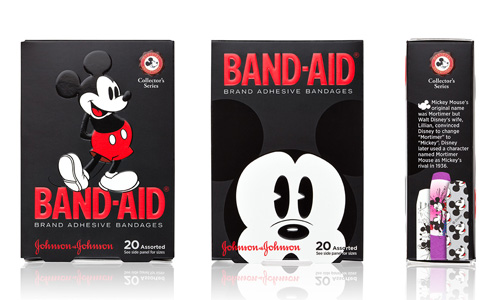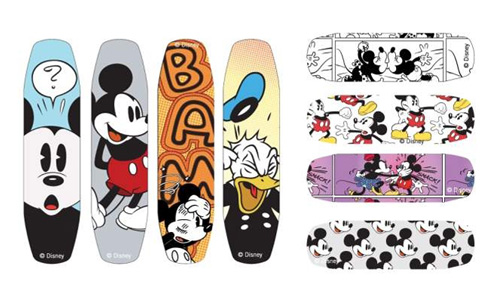The History of Band-Aids

First Band-Aid Brand Adhesive Bandage Package, 1921. Photo Credit: Kilmer House
Band-Aids. I am struggling to write an introduction for the history of Band-Aids since, frankly, these adhesive strips speak for themselves. For me, the klutz magnet, Band-Aids have always played an intricate role in my life. It is to the point that just thinking about my klutziness actually makes me bleed. To combat my random cuts and lacerations, I stock up on the newest and greatest Band-Aids available. I am even adult-enough to admit that my favorites are recently released Mickey Mouse ones (see below)! But I, of course, digress. The point is it is hard to believe that these everyday necessities are not even a century old.

Earle Dickson the inventor of Band-Aids. Photo Credit: Kilmer House
To be exact, they were created in 1920. Earle Dickson, a cotton buyer for Johnson & Johnson, invented the Band-Aid, but the credit should really go to his wife Josephine. Perhaps I am distantly related or am a reincarnation of her since she sounds like a major butterfingers herself. According to Johnson & Johnson, Josephine tended to injure herself frequently through cooking and housekeeping tasks. (Funny, I usually get injured while avoiding those same exact things….) Earle found it difficult and cumbersome to continue to use cotton balls and wrapping on Josephine’s minor cuts, so he sought an easier way for a person to bandage themselves up. The Band-Aid was born.
When they hit the market in 1920, Band-Aids were handmade and came in strips that were two and a half inches wide and eighteen inches long. The person would cut the Band-Aid to the specifications they needed. However, in the early years, this new and improved bandage did not sell very well. In the first year only $3,000 worth was sold.
Johnson & Johnson decided to use a different marketing strategy. Deciding that their main clients were families, mainly mothers, they distributed free Band-Aids to the people they felt would need them the most – Boy Scouts. After giving away an unlimited number to Boy Scout troops across the U.S., Band-Aid sales began to increase.
In 1939, Band-Aids became completely sterilized, just in time for World War II. When the war broke out most factories and corporations converted themselves into war effort machines. The same was with Johnson & Johnson factories. During the war, they sent millions of Band-Aids overseas and the bandages were even included in standard mess kits. As the soldiers came home at the end of the war, Band-Aid’s reputation and sales increased greatly.
If you are wondering what ever happened to Earle Dickson, don’t worry, Johnson & Johnson did not forget about him. Earle was promoted to a vice president position and held it until he retired in 1957. After his retirement, he was a member of the board of directors until his death in 1961. By this time Band-Aids were well-known and a hot seller for the company. At the time of Earle’s death, around $30,000,000 worth of Band-Aids sold each year. Quite an accomplishment from its first year total of $3,000!
Additional Facts about Band-Aids
- The red string that is used to open the wrappers first appears on the box in 1924.
- Decorative Band-Aids were not introduced until 1956.
- In 1963, Band-Aids went into space for the first time with the Mercury astronauts.
- John Travolta and Brooke Shields both appeared in separate Band-Aid commercials in the 70′s.
- Barry Manilow composed the famous Band-Aid jingle (“I am stuck on Band-Aid brand, ‘cause Band-Aid’s stick on me!”).
- The year 2001 marks the anniversary of 100 billion bandages made.
Sources
Craft, Dr. Naomi. The Little Book of Medical Breakthroughs. New York: Metro Books, 2010, 102.
Johnson & Johnson website
“Inventor of the Week,” Massachusetts Institute of Technology website.
Katie McLaughlin, “Barry Manilow: Audiences connect with a guy who’s telling the truth,” cnn.com, June 23, 2011.











Cool! I just saw bacon Band-Aids on Pinterest…
My sister bought her husband a bunch of the bacon ones! I’ve also seen pickle Band-Aids too!
Does anyone know his childhood besides his parents name? I need this pronto. All websites just talk little about his wife and mostly band-aids.
The American National Biography has a more extensive biography on Earle Dickson but not a whole lot more about his childhood. Depending on how quickly you need the information, I would reach out to the East Tennessee Historical Society since he grew up in Grandview, Tennessee or contact the Kilmer House as it is the blog for the Johnson & Johnson Company.